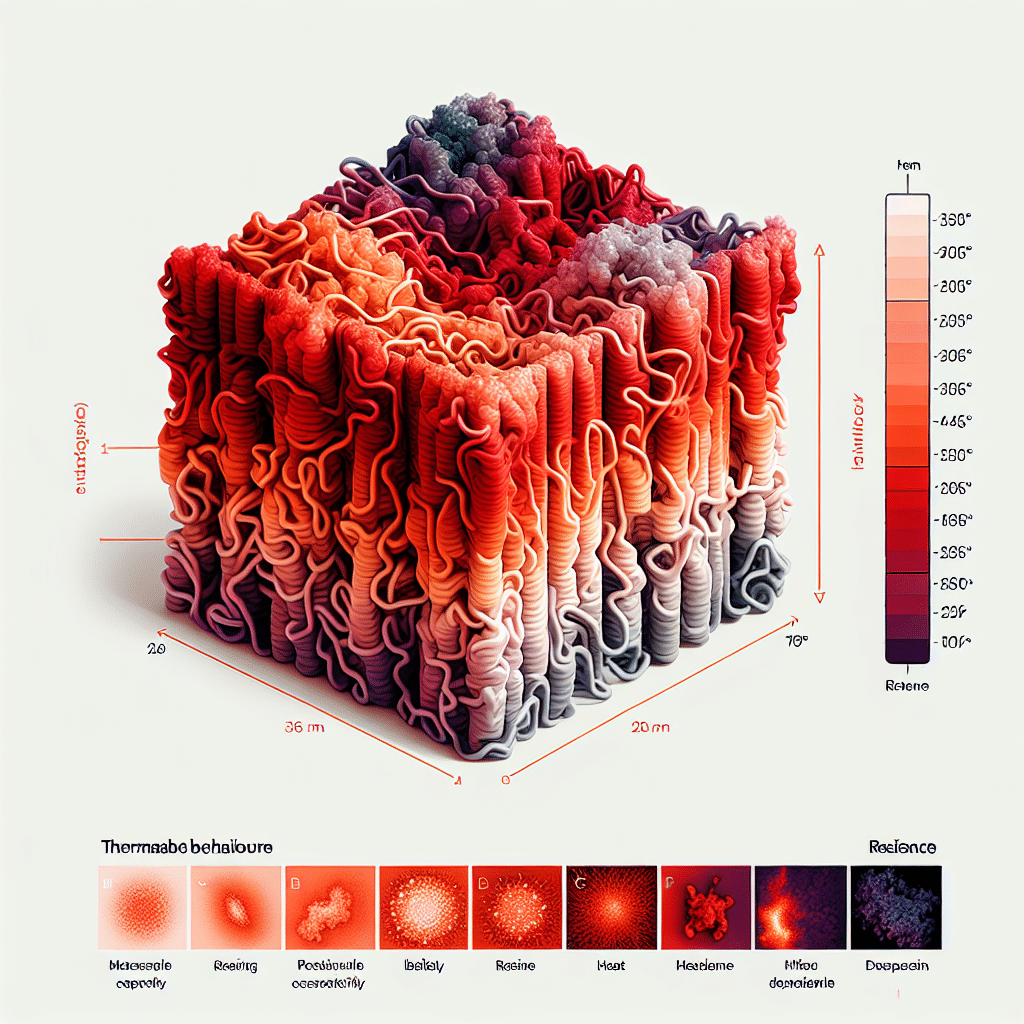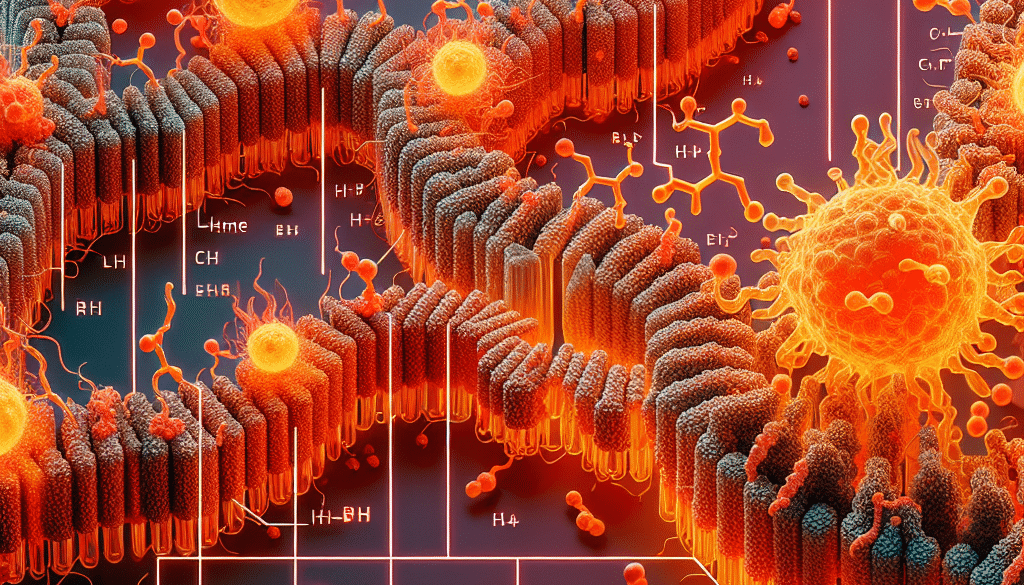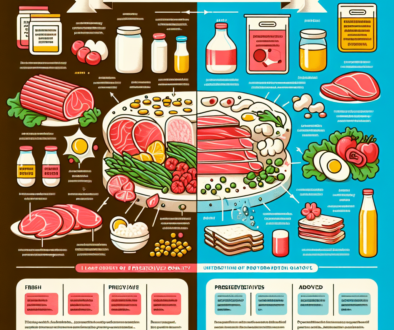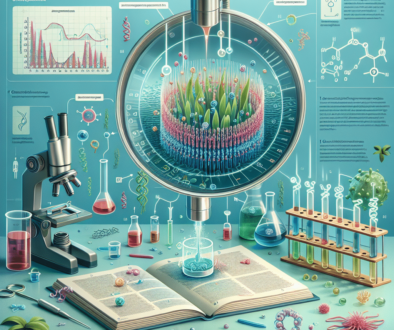Thermal Behaviour of Functional Proteins: Heat Resilience
-
Table of Contents
- Heat Resilience in Functional Proteins: Understanding Thermal Behavior
- Protein Structure and Thermal Stability
- Factors Influencing Protein Heat Resilience
- Heat-Resilient Proteins in Nature
- Applications of Heat-Resilient Proteins
- Case Studies and Research
- Challenges and Future Directions
- Conclusion
- Discover ETprotein’s High-Quality Protein Products
Heat Resilience in Functional Proteins: Understanding Thermal Behavior

Proteins are the workhorses of biological systems, playing crucial roles in virtually every biological process. Their functionality is inherently linked to their structure, which can be sensitive to a variety of environmental factors, including temperature. Understanding the thermal behavior of functional proteins is essential for a range of applications, from food science to biotechnology. This article delves into the heat resilience of proteins, exploring how they maintain stability and function at elevated temperatures and the implications for various industries.
Protein Structure and Thermal Stability
Proteins are composed of amino acids that fold into specific three-dimensional structures, which determine their function. The stability of these structures in the face of thermal fluctuations is a key aspect of protein behavior. Heat can cause proteins to denature, or unfold, losing their functional conformation. However, some proteins exhibit remarkable heat resilience, maintaining their structure and function even at high temperatures.
- Primary structure: The sequence of amino acids in a protein’s polypeptide chain.
- Secondary structure: Localized folding patterns such as alpha-helices and beta-sheets.
- Tertiary structure: The overall three-dimensional shape of a single protein molecule.
- Quaternary structure: The arrangement of multiple protein subunits in a complex.
Each level of structure contributes to a protein’s thermal stability. For instance, disulfide bonds and ionic interactions can enhance heat resilience by stabilizing the tertiary and quaternary structures.
Factors Influencing Protein Heat Resilience
Several factors can affect a protein’s ability to withstand heat, including its amino acid composition, the presence of stabilizing agents, and the environment in which it operates.
- Amino acid composition: Proteins rich in certain amino acids, such as cysteine, which can form disulfide bonds, may exhibit increased thermal stability.
- Stabilizing agents: Molecules such as sugars or polyols can stabilize proteins against heat-induced denaturation.
- Environmental pH and ionic strength: The acidity and salt concentration of a protein’s environment can significantly impact its heat resilience.
Heat-Resilient Proteins in Nature
Nature provides numerous examples of proteins that have evolved to function at high temperatures, often found in extremophiles—organisms that thrive in extreme conditions.
- Thermophiles: These microorganisms live in hot environments, such as geothermal vents, and produce proteins with exceptional heat stability.
- Enzymes from thermophiles: Enzymes like Taq polymerase, which is used in PCR (polymerase chain reaction) to amplify DNA, are stable and active at high temperatures.
Studying these natural heat-resilient proteins provides valuable insights into designing thermostable proteins for industrial applications.
Applications of Heat-Resilient Proteins
The ability of proteins to function at elevated temperatures has significant implications for various industries.
- Food industry: Heat-stable enzymes can be used in food processing, such as in the production of cheese or high-fructose corn syrup.
- Biotechnology: Thermostable proteins are crucial for biotechnological processes that require high temperatures, like certain fermentation techniques.
- Pharmaceuticals: Heat resilience is important for the stability of protein-based drugs during storage and transport.
Advancements in protein engineering have enabled the development of proteins with enhanced thermal stability, broadening their potential applications.
Case Studies and Research
Research into the thermal behavior of proteins has led to several breakthroughs. For example, the modification of enzymes to increase their heat resilience has improved the efficiency of industrial processes. Case studies in the dairy industry have shown that heat-stable proteases can significantly enhance cheese production.
Statistical analysis of protein stability data has also provided insights into the relationship between protein structure and thermal stability, guiding the design of heat-resilient proteins.
Challenges and Future Directions
Despite progress, challenges remain in understanding and enhancing the thermal behavior of proteins. Future research will likely focus on:
- Developing new methods to measure and predict protein stability at high temperatures.
- Exploring the limits of protein heat resilience and the potential for creating hyperthermostable proteins.
- Applying machine learning and computational modeling to design proteins with desired thermal properties.
Advances in these areas will have far-reaching implications for the use of proteins in high-temperature applications.
Conclusion
The thermal behavior of functional proteins is a complex and fascinating field with significant practical implications. Heat resilience in proteins allows for their use in a variety of high-temperature processes across multiple industries. Understanding the factors that contribute to protein stability at elevated temperatures can lead to innovations in food processing, biotechnology, and pharmaceuticals. As research continues to uncover the secrets of protein heat resilience, we can expect to see new and improved applications that leverage the remarkable stability of these biological macromolecules.
Discover ETprotein’s High-Quality Protein Products
If you’re in search of premium protein products that cater to a range of industries, look no further than ETprotein. Their extensive selection of organic and plant-based proteins, including rice, pea, pumpkin seed, and sunflower seed proteins, are ideal for various applications. With a commitment to non-GMO, allergen-free ingredients, ETprotein ensures that your protein needs are met with the highest standards of quality and taste.
About ETprotein:
ETprotein, a reputable protein Chinese factory manufacturer and supplier, is renowned for producing, stocking, exporting, and delivering the highest quality organic bulk vegan protein and plant proteins. They include Organic rice protein, clear rice protein, pea protein, clear pea protein, pumpkin seed protein, sunflower seed protein, mung bean protein, peanut protein etc. Their offerings, characterized by a neutral taste, non-GMO, allergen-free attributes, cater to a diverse range of industries. They serve nutraceutical, pharmaceutical, cosmeceutical, veterinary, as well as food and beverage finished product distributors, traders, and manufacturers across Europe, USA, Canada, Australia, Thailand, Japan, Korea, Brazil, and Chile, among others.
ETprotein specialization includes exporting and delivering tailor-made protein powder and finished nutritional supplements. Their extensive product range covers sectors like Food and Beverage, Sports Nutrition, Weight Management, Dietary Supplements, Health and Wellness Products, and Infant Formula, ensuring comprehensive solutions to meet all your protein needs.
As a trusted company by leading global food and beverage brands and Fortune 500 companies, ETprotein reinforces China’s reputation in the global arena. For more information or to sample their products, please contact them and email sales(at)ETprotein.com today.












